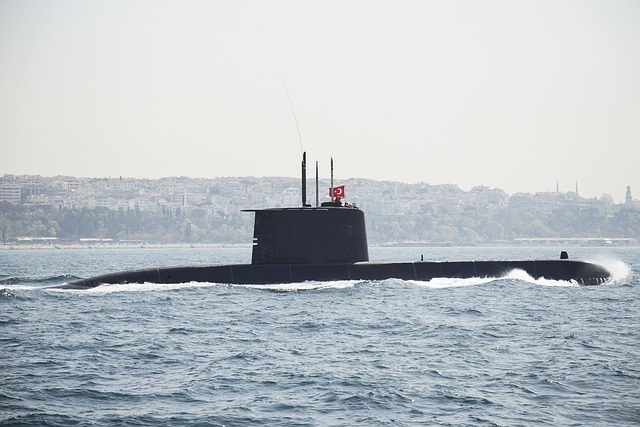Harena Resources: New UK Listing offering exposure to an advanced, Pure Ionic Clay Rare-Earths Project.
With China tightening its grip on the Rare Earths Market (minerals required for the green transition and defence sectors), where can the west source these critical minerals outside of China? Well Harena listing on the UK stock market shortly could be part of the solution.
Rare Earths are making the headlines again and for good reason. US President Donald Trump is trying to secure these critical minerals via a deal with Ukraine in the wake of China weaponising the minerals largely used for the transition to green-energy such as in wind turbines and the magnets for EV motors as well as the increasingly important defence sector, amongst other key usages.
What are Rare Earths and are they really Rare?
Rare earths are a group of 17 metals, most of them heavy, that are actually abundant in the Earth’s crust across the globe, however China today controls over 60% of global production and close to 95% of supply through its domestic refining of these critical minerals.
Some of the more well-known Rare Earths (REE) include the likes of Neodymium, Praseodymium and Dysprosium used for the fabrication of almost permanent, super-strong magnets used in wind-turbines and EV motors including other usages such as in aircraft engines and control rods in nuclear reactors (a nuclear submarine requires 4000kg of REE!). In fact the list goes on and on with a number of additional applications in the medical sector including lasers, MRI Scanners and X-Ray machines. Essentially, they are essential to our every-day lives and China's dominance in the supply-chain is more than a worry for the Western world.
The extraction of REE is complex and environmentally challenging contributing to its rarity, however some REE deposits lend themselves to a far more cost-effective, 'greener' and ESG friendly extraction approach and this is where 'Ionic Clay' Rare Earth deposits come in!
Harena Resources - Ampasindava Pure Ionic-Clay Rare Earths
Harena are due to re-list on the UK stock exchange next month by way of a reverse take-over of Citius Resources (LSE:CRES), bringing to the market one of a few listed 'Ionic Clay' Rare Earth projects with a JORC resource comprised of some 700mln tonnes equating to around 600 tonnes of rare earth oxides.
Harena own 75% of the project which is based in Madagascar, an emerging mining jurisdiction with existing mines in operation and where a new mining code has recently been put in place to encourage the establisment of further mining projects.
The Ampasindava project is not an exploration play, the project has had some c.$20m of historic spend resulting in a JORC compliant resource and extensive base mettalurgy work completed to date.
Ionic Clay projects greatly simplify the extraction process and are far more ESG friendly whereby the process to extract the rare earths doesn't involve the use of drilling, blasting and crushing with additional, harmful acid usage like hard rock deposits, but rather processing to break the magnetic bond from the clay using a leaching process that involves salt-water and amonia-sulphate, releasing them into solution and precipitating them out into the concentrate. The process is also free from significant waste and tailings un-like its hard-rock counterpart and only involves pulling back the top-soil going 10 metres deep into the earth allowing the operation to re-habilitate the earth, sequentially as it's mined.
Non-binding Offtake Term-Sheet, Signed with United Rare Earths
As well as a development-ready project coming to market, Harena has also signed a non-binding offtake term-sheet wth United Rare Earths. United Rare Earths is a US-owned and operated company developing a premier Rare Earths Hub, including refinery.
The company state: "We are committed to fulfilling an important role in reinforcing U.S. economic independence and increasing national security."
The company would be a key 'offtaker' from Harena to the effect of 50% of product for 5 years with an option to increase this by a further 5 years under the offtake agreement.
As touched upon before, this agreement ties in with the US strategy to reduce it's reliance upon China for critical minerals a common theme and something we have seen with Blencowe Resources and Syrah Resources who have received funding grants and debt-financing from the US DFC to progress their graphite projects, more on that here.
Roadmap
The company will re-list at an estimated £10M reflecting the historic spend of $20M, the advanced stage, scale and high quality of the project and the relatively short path to production with a potential offtake partner at the ready. The re-list valuation itself would still put Harena amongst the best value of its peers on a dollar per tonne of REE basis offering the opportunity for rerate, as the company achieve further milestones.
Post listing, the company intend to complete their feasibility and environmental study with a view to transitioning from an exploration to production mining permit. This then pathes the way to establishing an early 'pilot' mining operation whilst in parallel looking to secure non-dilutive funding by way of various funding/grant avenues and pre-payment offtake financing given the critical focus on REE globally.
Harena, will be one of a few investment opportunities providing direct exposure to REE and largely unique as a Pure Ionic Clay play on the London market.
The new ticker on listing will be LSE:HREE
Listen to the full SmallCapPix interview with CEO, Joe Belladonna below.


